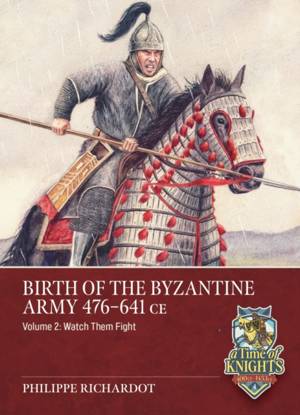
- Retrait en 2 heures
- Assortiment impressionnant
- Paiement sécurisé
- Toujours un magasin près de chez vous
- Retrait gratuit dans votre magasin Club
- 7.000.0000 titres dans notre catalogue
- Payer en toute sécurité
- Toujours un magasin près de chez vous
41,95 €
+ 83 points
Description
Birth of the Byzantine Army breaks with the historiographical habit of studying the Romano-Byzantine army solely during Justinian's reign (527-565 CE) and neglecting the Eastern emperors who preceded him following the fall of the Western Empire in 476. This comprehensive study also encompasses the period up to the end of Heraclius' reign, the last soldier-emperor of the Late Roman tradition, in 641. By then, the Slavs had seized the Latin-speaking lands of the Balkans, while the Muslims had invaded Syria and Egypt. These two conquering peoples ushered in a new geopolitical era and deprived the imperial army of considerable resources. Constantinople had become fully Byzantium, and the Late Roman military tradition could not be upheld beyond this point.
Over the course of these 165 years, the Romano-Byzantine army could not remain unchanged. In addition to traditional foes like the Persians and steppe horsemen, it also faced new challenges such as campaigns in North Africa, and also against the Vandals and the Ostrogoths. Ensnared by these new conquests, the imperial army of Byzantium was compelled to defend them against the Moors in Africa and the Lombards in Italy. Along the Danube border, it had to contain the Slavs and Avars, whose siege capabilities posed a threat to Byzantium itself. New organisation and tactics became necessary. Does this make it a Late Roman Army or a brand-new Byzantine one? That is the question!
Over the course of these 165 years, the Romano-Byzantine army could not remain unchanged. In addition to traditional foes like the Persians and steppe horsemen, it also faced new challenges such as campaigns in North Africa, and also against the Vandals and the Ostrogoths. Ensnared by these new conquests, the imperial army of Byzantium was compelled to defend them against the Moors in Africa and the Lombards in Italy. Along the Danube border, it had to contain the Slavs and Avars, whose siege capabilities posed a threat to Byzantium itself. New organisation and tactics became necessary. Does this make it a Late Roman Army or a brand-new Byzantine one? That is the question!
Spécifications
Parties prenantes
- Auteur(s) :
- Editeur:
Contenu
- Nombre de pages :
- 272
- Langue:
- Anglais
- Collection :
Caractéristiques
- EAN:
- 9781804518489
- Date de parution :
- 30-01-26
- Format:
- Livre broché
- Format numérique:
- Trade paperback (VS)
- Dimensions :
- 180 mm x 249 mm

Seulement chez Librairie Club
+ 83 points sur votre carte client de Librairie Club
Les avis
Nous publions uniquement les avis qui respectent les conditions requises. Consultez nos conditions pour les avis.






